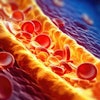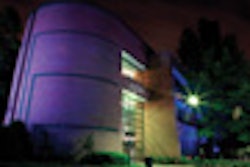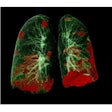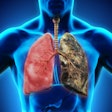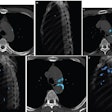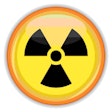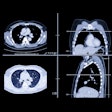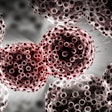VIENNA - Should a computer program be allowed to prescribe drugs? In the case of elderly and infirm patients undergoing coronary CT angiography (CTA), the answer appears to be yes.
A work-in-progress application that bases coronary CTA contrast dose and timing on a patient's individual cardiac output significantly reduces contrast media use and, by extension, the risk of nephropathy, concludes a study of 70 patients who underwent coronary CTA using the application, compared to a control group that received a standard contrast protocol.
The automated patient-specific contrast protocol, long sought by cardiac imaging professionals, builds on decades of research examining coronary artery enhancement in patients of different sizes, ages, body types, and cardiac output capacities. If the study methods are proved in larger cohorts, the development could lead to more efficient use of contrast media, safer studies, and vastly simplified coronary CTA protocols.
Doctors should be especially cautious about injecting contrast in the older, symptomatic patients who are typical candidates for coronary CTA, said Dr. Pal Suryami from the Medical University of South Carolina in Charleston.
"There are concerns about the renal safety of iodinated contrast media, and our population of CTA patients is very old," Suryami said Friday at the 2008 European Congress of Radiology (ECR) in Vienna. "In those patients, you really need to be aware of the dangers of using iodinated contrast."
The study compared contrast use and coronary artery enhancement in 70 patients (mean age 59.2, mean body mass index [BMI] 30.4) who underwent coronary artery CTA on a dual-source scanner (Somatom Definition, Siemens Medical Solutions, Malvern, PA). They compared the enhancement results to a demographically similar control group of 50 patients (mean age 60.7, mean BMI 32) who underwent dual-source CTA using the institution's standard triphasic contrast protocol. All the patients had clinical indications for coronary CTA.
The researchers did not use nitrates or beta-blockers, but did utilize ECG pulsing to minimize the radiation dose, Suryami said.
The investigational application (SmartFlow, Medrad, Indianola, PA) uses a computerized algorithm to prospectively individualize contrast volume and injection parameters, based on patient-specific variables and the time-attenuation response in the pulmonary artery and aorta following a test bolus injection used to approximate cardiac output, Suryami explained.
"The basic idea is that when you administer contrast media at a certain rate or certain concentration you get an iodine influx (into the bloodstream)," he said. "This iodine influx is actually being diluted constantly by the cardiac output. Eventually, the enhancement that you obtain in the coronary arteries will be determined primarily by the cardiac output." Homogenous attenuation throughout the coronary tree serves to maximize the diagnostic quality of CTA scans, he added.
The researchers targeted their attenuation level at 250 HU or greater, and from the resulting image data, measured contrast attenuation in the aorta in the proximal, mid, and distal coronary arteries.
Considering that cardiac output is the most important factor in enhancement, the developer created a "black box" algorithm to translate input factors into enhancement, Suryami said.
"I don't really want to know what the black box is. I only want to know what I have to put in there: Time to peak and mean enhancement of the aorta," he said, along with the desired enhancement level of 250 HU throughout the coronary artery tree -- a relatively low enhancement level chosen to minimize contrast use.
The operator inputs the patient variables into the program, the scan duration, and four test bolus data variables, "after which the computer (estimates cardiac output) and suggests the contrast phase, the mixing phase, and the saline phase," he said. The physician reviews the results before the trigger is pulled, so there is always oversight of the results before the patient is scanned, according to Suryami.
The research team compared the amount of contrast (300 mg I/mL, 4.2 mL/sec) that was actually injected to the volume that would have been injected during the routine scan-duration-based injection protocol. The standard protocol is based on an initial contrast injection at 6 mL/sec followed by a mixture of contrast and saline, and finally a saline flush, Suryami said.
All of the studies produced diagnostic images. The mean ± standard deviation (SD) contrast attenuation ranged from 237 ± 56 in the distal left anterior descending artery (LAD) to 277 ± 48 HU in the proximal right coronary artery (RCA).
Attenuation in the left main (LM) artery (272 HU ± 52), proximal LAD (270 ± 49), left circumflex (LCX) arteries were significantly higher than 250 HU. A couple of arteries falling consistently below but not far from the target were the distal LAD (237 ± 56) and LCX (241 ± 36). Meanwhile, attenuation in the aorta, mid-LAD, and mid-LCX were not significantly higher than the target of 250 HU.
The mean total contrast used for the automated protocol was 65.3 mL ± 19 versus 85.7 mL ± 12 for the standard triphasic protocol. The mean overall contrast savings with use of the application was 19.7 ± 24.1 mL, and excellent opacification was achieved throughout the coronary arteries, according to Suryami.
The mean injection rate for the automated protocol was 4.2 mL/sec versus 6.0 for the standard protocol. There was a significant negative correlation (r = -0.67, p < 0.05) between cardiac output and contrast savings, meaning that for sicker patients a small contrast dose is as effective as a large one, according to Suryami.
In a patient with very low cardiac output, "such a small contrast dose produced such high attenuation," he said. "In sick patients with low cardiac output, there is no point in injecting 100 or 120 cc of contrast.... With patients with lower cardiac output, the savings was often 80 mL for individual patients."
On the other hand, those with high cardiac output benefited from the application's advice to use more contrast, Suryami said. And enhancement was far less homogeneous in the control group, he said. In this group, attenuation levels in different arteries varied enough to approach statistical significance.
Cardiac-output-based, individually computed injection protocols can minimize the volume of contrast used, while consistently achieving a predetermined target enhancement level throughout the coronary arteries, he concluded. Contrast savings are greatest in patients who have the lowest cardiac output.
"We hope that computer-assisted contrast-dosing techniques will be integrated with scanners," avoiding the need to input test bolus results, Suryami said.
By Eric Barnes
AuntMinnie.com staff writer
March 7, 2008
Related Reading
Dual-source CT edges into cardiac SPECT turf, March 6, 2008
DSCT matches angiography for stenosis detection -- even in fast hearts, December 4, 2007
CTA predicts functional recovery of the myocardium, September 7, 2007
Dual-source coronary CTA images the calcium-burdened, April 13, 2007
Elderly need less contrast for pancreatobiliary imaging, August 2, 2006
Contrast delivery key in coronary CTA, September 7, 2005
Copyright © 2008 AuntMinnie.com



